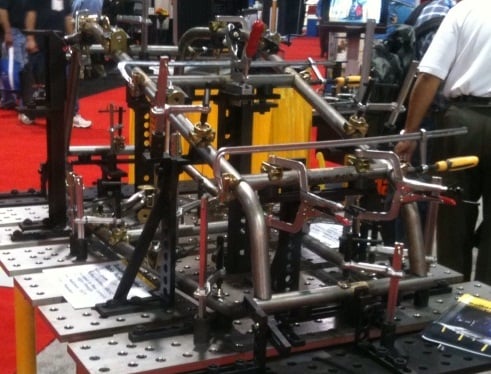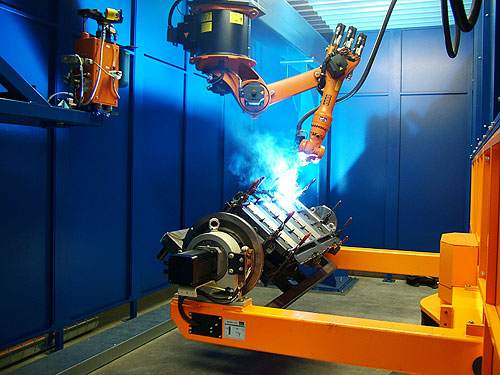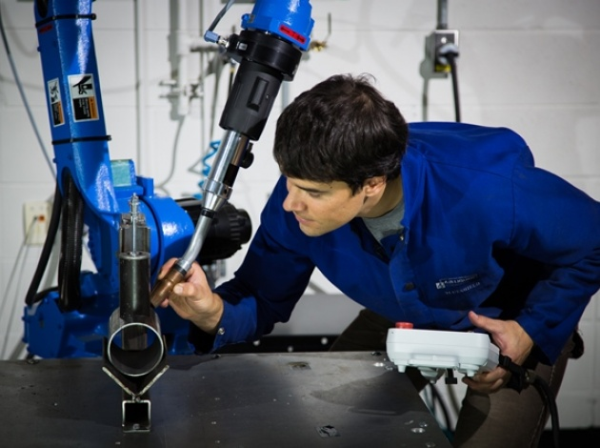How to Simplify Jigs in Robotic Welding Applications

Posted on Jan 18, 2011 in Robotic Welding
1 min read time
In welding, jigs are used to precisely and firmly position parts while they are welded. The picture below shows such a jig.

Welding jigs are typically custom made, per application. With such customization in industrial settings, jigs often come with the following issues:
- They can cost several $10's or $100's of thousands of dollars.
- They lack flexibility. If there are engineering changes to the product, the jig must be manually modified or replaced which can hinder mix model production.
- They are prone to errors. Parts are usually fed to the jig by a human operator. In some cases, there are hundreds of different, yet similar parts. It is easy to make a mistake.
- They require low value-added work of filling them with parts.
So if these issues exist, why are jigs still used in robotic welding? The first reason is because jigs have been the industry standard for many years. The second reason is because it is technically challenging to replace them. This is especially true when there are a high number of different parts to weld. In this video (demo was also presented at Fabtech 2010), Fanuc presents a way to use robots that place parts on a simplified jig while other robots do the welding.
Components it takes to create this application:
- Robots with grippers being able to pick parts and hold them firmly in the welding environment.
- A vision system to identify parts, their initial position and ensure the quality of the weld.
- Welding robots, the same that would be used with jigs.
- And, of course, the programming that brings all this together.
From our point of view, this is a very promising way to simplify jigs in order to add flexibility, reduce scrap, improve throughput and add flexibility.





Leave a comment